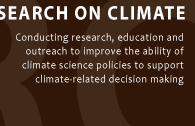

ORGANIZATIONAL CHANGE IN THE |
|
In the mid-1990s, the US Geological Survey (USGS) faced intense scrutiny from Congress, accusations of irrelevance to societal problems, and threats of extinction. At the same time, the USGS’s large-scale earthquake prediction program, the Parkfield Earthquake Experiment, was widely deemed a failure. This, combined with mounting discontent with the traditionally isolated, basic science approach of many of its scholars led the USGS to reconsider its approach. The mission of minimizing the loss of life and property during natural disasters remained the same, but instead of relying on better prediction to minimize losses, the USGS shifted its focus to the effects of, and responses to earthquakes. This required a reprioritization, and encouraged scholars to identify and actively work with users. Consequently, USGS scientists have actively developed relationships with the users of their information – e.g. state departments of transportation, building engineers, utilities, and local governments – and have shaped their research agendas based in part on those lasting partnerships. In lieu of prediction, once a primary value driving their science portfolio, a large percentage of the agency budget now focuses on the decisions these users must make to reduce vulnerability. |
 |
For example, in cooperation with lifeline operators (electricity, water, power) and the California Department of Transportation (Cal Trans), USGS scholars develop shake maps – assessments of the intensity of ground shaking around an earthquake site. They integrate these maps with Cal Trans’s assessment of its infrastructure, and together with Cal Trans, send out automatic alerts when an earthquake hits. Owing to these developments and this new focus, earthquake research benefits from the buy-in, input, and understanding of its intended users . These USGS researchers actively work with users, and shape their research priorities to meet decision maker needs. |
|